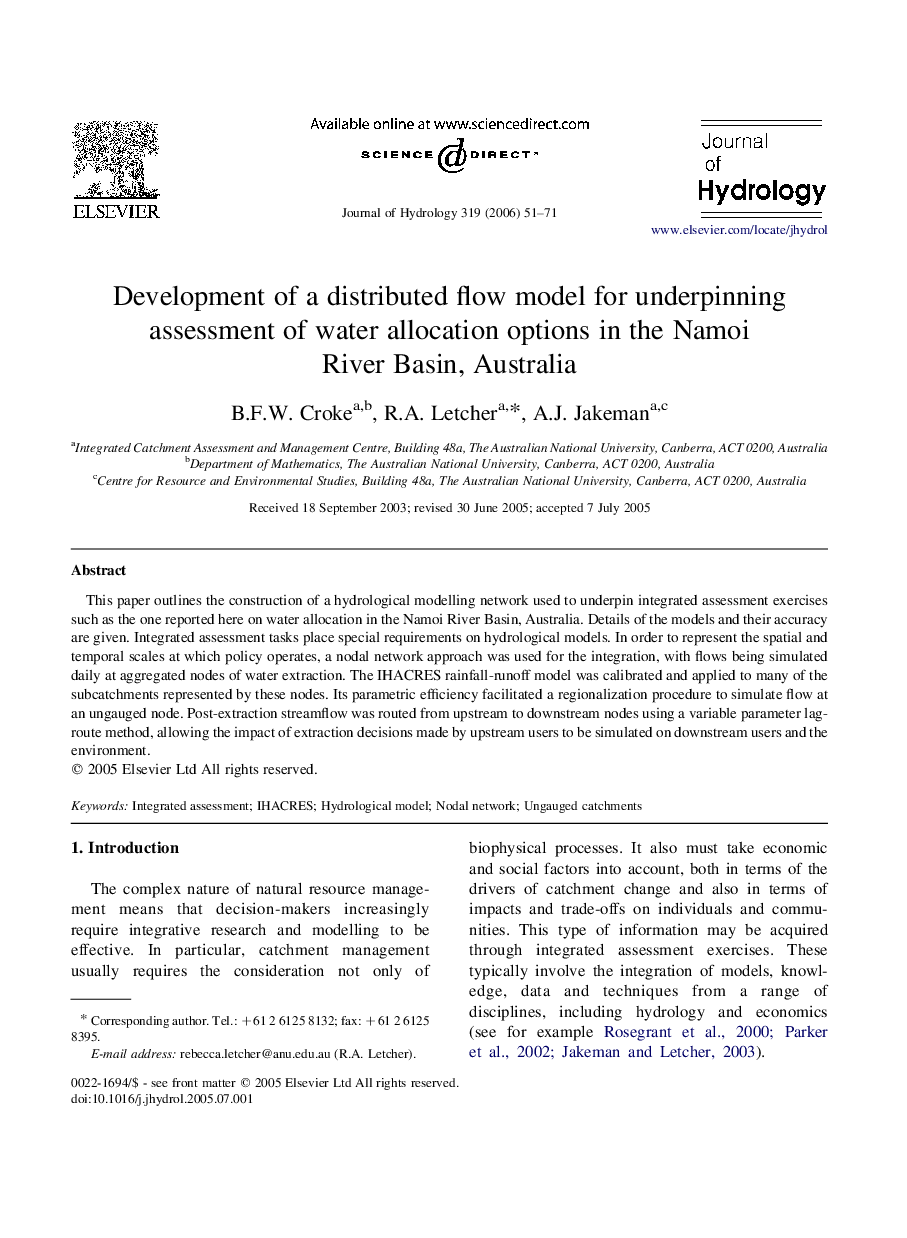| Article ID | Journal | Published Year | Pages | File Type |
|---|---|---|---|---|
| 4580815 | Journal of Hydrology | 2006 | 21 Pages |
This paper outlines the construction of a hydrological modelling network used to underpin integrated assessment exercises such as the one reported here on water allocation in the Namoi River Basin, Australia. Details of the models and their accuracy are given. Integrated assessment tasks place special requirements on hydrological models. In order to represent the spatial and temporal scales at which policy operates, a nodal network approach was used for the integration, with flows being simulated daily at aggregated nodes of water extraction. The IHACRES rainfall-runoff model was calibrated and applied to many of the subcatchments represented by these nodes. Its parametric efficiency facilitated a regionalization procedure to simulate flow at an ungauged node. Post-extraction streamflow was routed from upstream to downstream nodes using a variable parameter lag-route method, allowing the impact of extraction decisions made by upstream users to be simulated on downstream users and the environment.
